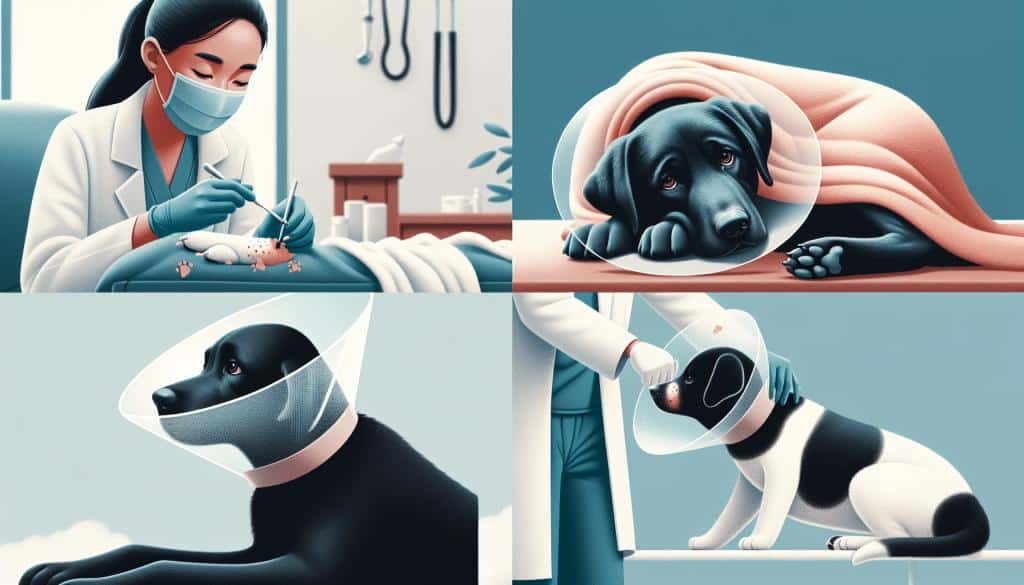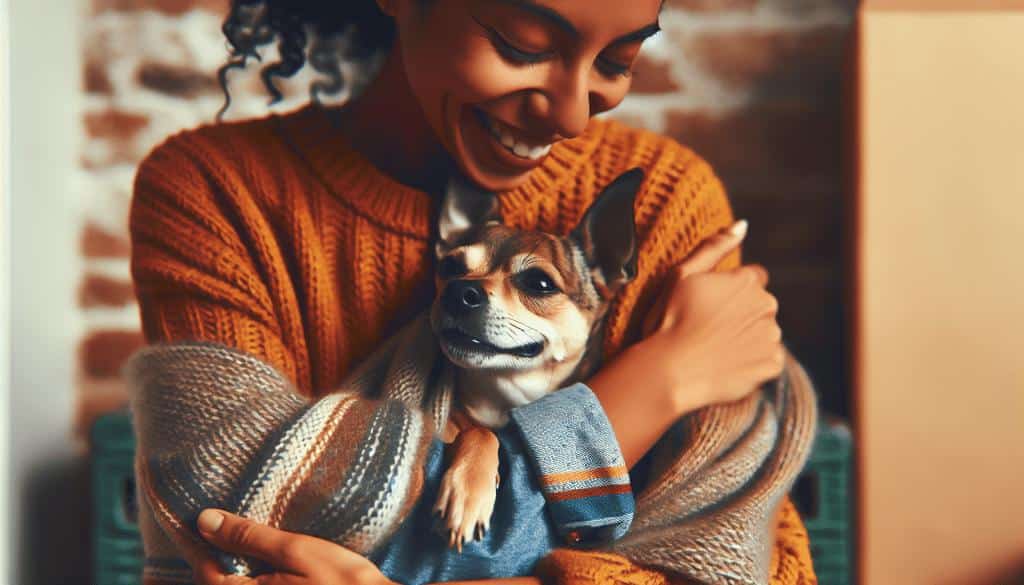Hey there, pet enthusiasts and furry-friend fanatics! Are you ready to embark on an exciting journey through the comprehensive pet health guide to wellness?
Buckle up because we’re about to dive paw-first into an adventure that’s not just informative but also a barrel of awws!
The Art of Crafting a Balanced Diet for Pets
In the pet world, ‘diet’ is far from a dreary word; it’s a celebration of taste, health, and happiness! Let’s explore the culinary wonders that make up a wholesome and delightful menu for our animal buddies.
Tailoring Feasts for Our Diverse Animal Friends
| Dogs | Imagine a protein-rich feast akin to a meat lover’s dream but tailored for canines. It’s a mix of protein, fats, carbohydrates, vitamins, and minerals, with a side of veggies. It’s their version of a balanced, gourmet meal |
| Cats | These majestic creatures prefer a high-protein, low-carb regime, much like a feline-adapted Atkins diet. A diet fit for their royal carnivorous nature. |
| Birds | Beyond seeds, our feathered friends enjoy a diverse mix of grains, fruits, vegetables, and protein – a veritable avian salad bar. |
| Reptiles | Each reptile has its own dietary preferences. Tortoises might lean towards leafy salads, while snakes go for a carnivorous menu. It’s all about catering to their specific tastes. |
| Fish | From flakes and pellets to live food, our aquatic pals’ diets vary like an underwater buffet, offering everything from sushi-style delicacies to vegetarian options. |
| Rodents | These small mammals enjoy a balanced diet of grains, vegetables, and occasional proteins |
| Lagomorphs (Nerd talk for Rabbits, Hares, and Pikas) | These cuties thrive on a high-fiber diet with plenty of hay, fresh veggies, and a few pellets – like health enthusiasts of the animal kingdom. |
Homemade vs. Commercial Pet Diets
- Homemade: The “MasterChef” approach to pet food. It’s all about knowing the right ingredients and proportions. Pros: You know exactly what’s going on. Cons: Time-consuming and requires nutritional knowledge.
- Commercial Diets: The convenient, ready-to-eat meal. Balanced and formulated by experts (no, not just marketing gurus). Pros: Convenient and nutritionally complete. Cons: Quality varies, and labels can be misleading.
A Guide to What’s Really in Your Pet’s Food
Navigating pet food labels can feel like decoding a secret message. Here’s a quick guide to being a savvy shopper:
- Ingredients: Listed in order of weight. Look for whole food ingredients and specific protein sources.
- “By-Products”: Not necessarily bad, but knowing what type of by-products are used is key.
- Guaranteed Analysis: This tells you the minimum or maximum amount of nutrients like protein, fat, fiber, and moisture.
- AAFCO Statement: This indicates if the food meets the nutritional standards set by the Association of American Feed Control Officials.
In the delightful world of pet diets, variety is key, but so is balance. Whether you’re a fan of homemade, gourmet meals or the grab-and-go type, ensuring your pet gets the right nutrition is what turns mealtime into a tail-wagging, feather-fluffing, happy dance of joy!
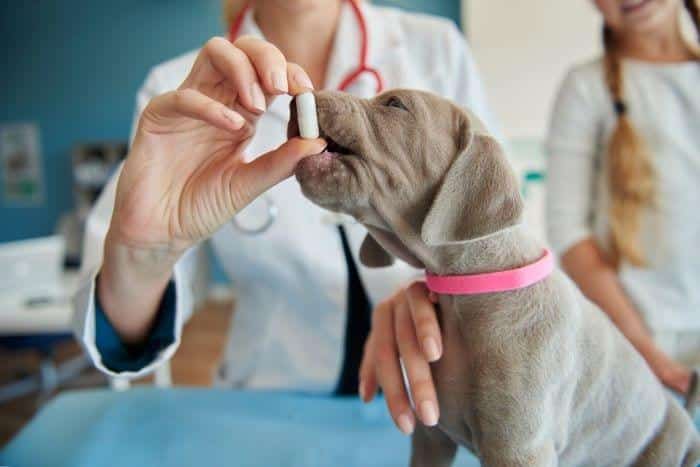
Supplements in the Pet Wellness
Pet supplements, where each little pill or powder is like a glittering star ready to brighten up your pet’s health. Just like a carefully chosen necklace or a dashing hat, supplements aren’t necessary for every pet, but when they fit, they shine!
The ‘Why’ and ‘When’ of Essential Pet Supplements
Sometimes, our furry companions need a little extra pep in their step, just like we do. For the senior pooches, a dash of joint support can make them feel youthful again, while our feline friends might appreciate some help with their hairball hurdles.
Supplements step in like nutritional superheroes when the regular diet just isn’t cutting the mustard, rounding out their meals and boosting overall well-being. Picture omega-3 fatty acids as the secret recipe for that envy-worthy shiny coat and a vitality boost.
The All-Stars of Pet Supplements
- Fish Oil: This is the go-to for gleaming coats and supple skin. Rich in omega-3s, it’s a favorite for both dogs and cats.
- Glucosamine: The MVP for joint health, giving older pets a new spring in their step.
- Probiotics: Like a master conductor for the gut, these keep the digestive tunes playing smoothly and healthily.
- Antioxidants: The body’s tiny cheerleaders, rallying against free radicals and keeping those cells in tip-top shape.
- Multivitamins: The versatile support squad, stepping in to fill any nutritional gaps and keep the health flag flying high.
Risks and Considerations of Pet Supplements
Going overboard with supplements can do more harm than good, much like too much hot sauce on your taco. Always aim for high-quality supplements from trusted sources – because not all are created equal.
Before starting any supplement regimen, a quick chat with your vet is key. They’ll guide you on what’s best for your pet’s unique needs, ensuring you’re not just guessing in the world of pet health supplements.
Supplements can be a great addition to your pet’s health routine, but they’re not magic pills. They work best when paired with a balanced diet and regular veterinary care. So, before you turn your pet into a supplement guinea pig, make sure you’re making informed, vet-approved choices!
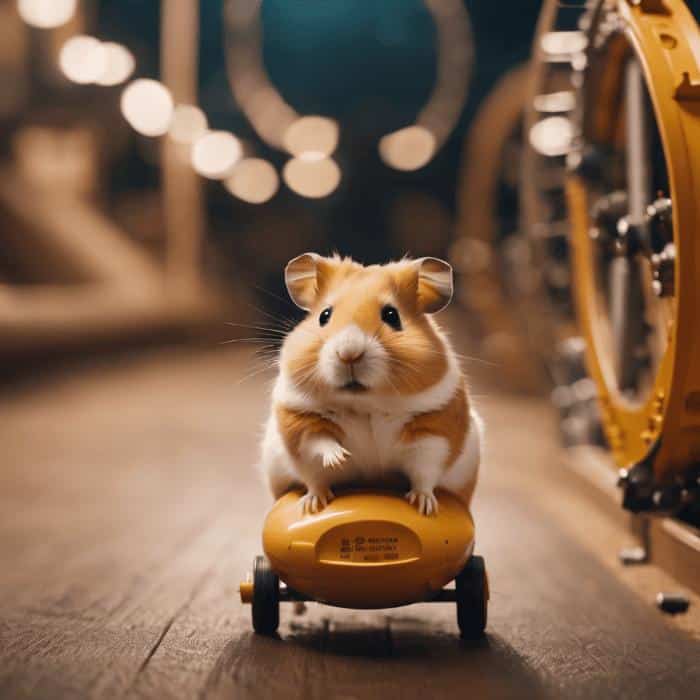
Pet Exercise Requirements
Let’s get those paws, claws, and fins moving! Exercise isn’t just for us humans trying to fit into our jeans; it’s a crucial part of a pet’s life, too.
Whether they’re running, flying, or swimming, keeping your pet active is key to a happy and healthy life. Let’s jump into the fun world of pet fitness – no gym membership required!
Tailoring Exercises to Different Types of Pets
| Dogs | From fetch marathons to sniffari adventures (walks where they can sniff to their heart’s content). Different breeds have different needs – greyhounds are sprinters, while Labradors are marathoners. |
| Cats | Laser pointer chase (a.k .a. “The Red Dot Olympics”), climbing trees, or even a game of hide and seek. Remember, their exercise often comes in short, intense bursts. |
| Birds | Flying is the best exercise. Encourage flapping or playing in a large enclosure if they can’t free-fly safely |
| Reptiles | Some enjoy roaming around the house or garden. Just ensure it’s safe and escape-proof. |
| Fish | From flakes and pellets to live food, our aquatic pals’ diets vary like an underwater buffet, offering everything from sushi-style delicacies to vegetarian options. |
| Rodents | Exercise wheels, tunnel mazes, and climbing structures. Think of it as their personal playground |
| Rabbits | They love to hop and explore. An enclosed yard or a bunny-proofed room works wonders. |
Innovative Indoor Exercise Ideas for Pets
- Create a mini obstacle course using pillows, boxes, and furniture. It’s like “Ninja Warrior” for pets.
- Hide treats around the house. It’s a great way to engage their mind and body.
- Some pets love moving to music. Okay, it might be more for your entertainment, but they’ll get moving!
- Toys that move or dispense treats can motivate even the laziest of lounge lizards.
The Role of Play in Pet Health
Regular playtime is like a fitness and wellness program for pets, combining the benefits of muscle-strengthening and agility akin to yoga and weightlifting. It’s crucial not just for their physical fitness but also for mental sharpness, keeping their brains engaged and alert.
Beyond health, playtime strengthens the bond between you and your pet, building trust and connection with every game. Plus, it’s an enjoyable way to manage their weight, helping to keep those extra treats from leading to extra pounds.
In short, play is an essential ingredient in maintaining your pet’s overall health and happiness.
In the world of pet exercise, creativity is your best friend. It’s all about finding fun ways to keep them moving and grooving. So, whether your pet runs, flies, or just hops along, let’s make fitness a fun part of their daily routine!
Health Issues in Pets
Just like us, our furry, feathery, and scaly friends can have their off days. But since they can’t tell us what’s wrong (if only pet telepathy was a thing!), it’s up to us to play detective.
Identifying and Addressing Common Pet Ailments
| Dogs | Look out for signs like coughing, diarrhea, loss of appetite, or a sudden lack of enthusiasm for destroying your slippers. Common issues include ear infections, skin allergies, and arthritis. |
| Cats | Keep an eye on litter box habits, changes in appetite, or if they’re suddenly more grumpy than the usual cat-level grumpy. They can suffer from urinary tract infections, dental disease, and kidney issues. |
| Birds | Changes in singing, eating, or pooping patterns can be red flags. Respiratory issues and feather plucking are common concerns. |
| Reptiles | Lethargy or changes in eating habits are signs something’s amiss. They can face problems like respiratory infections and metabolic bone disease. |
| Fish | Watch for changes in swimming patterns or appearance. Issues can include fin rot or ich (white spots). |
| Rodents | Look for changes in activity levels or eating habits. Respiratory infections and overgrown teeth are common. |
| Rabbits | Changes in eating, bathroom habits, or activity levels should catch your attention. Dental disease and GI stasis are frequent issues. |

Mental Health in Pets
Who knew that our animal pals could be just as complex and emotionally deep as us? Behind those adorable eyes and wagging tails, there’s a world of pet feelings. It’s not all chew toys and catnip; our pets can experience stress and anxiety, too.
Recognizing Signs of Pet Stress and Anxiety
- Dogs: Excessive barking, chewing (say goodbye to those unchewed shoes), or tail-chasing. Even the bravest pooch can have their down days.
- Cats: Over-grooming (because looking perfect isn’t always a choice), hiding, or a sudden interest in redecorating your curtains with their claws.
- Birds: Feather plucking, a change in vocalizations, or acting like a grumpy old bird. Yes, birds can have mood swings, too.
- Fish: Hiding, losing appetite, or rubbing against tank objects – it’s not just a new dance move.
- Reptiles: Excessive hiding or a decrease in eating can signal stress. No, they’re not just being fashionably aloof.
- Rodents: Over-grooming or aggressive behavior. Even the tiniest creatures can have big feelings.
- Rabbits: Over-grooming, hiding, or changes in bathroom habits. Sometimes, they’re not just being a bun; they’re stressed.
Enrichment Activities to Boost Pet Mental Health
Interactive toys are like brain gyms for your pets, keeping their minds sharp and bodies active. Puzzle feeders make mealtime a fun treasure hunt for food. Training sessions?
They’re not just for tricks; they’re a mental workout and a surefire way to earn bragging rights. And a little environmental enrichment with new sights, sounds, and smells is like giving your pet their very own home makeover!
The Importance of Pet Social Interaction
Playdates are perfect for social pets like dogs, while for cats, it’s all about giving them space (and treating them like the royalty they are). Cuddles and petting? They’re the fluffiest form of therapy and bonding.
Chatting with your pet might seem one-sided, but it’s comforting for both of you. And introducing a new pet buddy? It can be great, but take it slow and supervised – it’s like setting up a furry friend date!
Remember, mental health is just as important as physical health in our pets. By understanding their emotional needs and providing them with love, care, and enrichment, we ensure their lives are not just healthy but also happy and fulfilled.
So, let’s tune into their emotional channels – it’s where the real bonding happens!
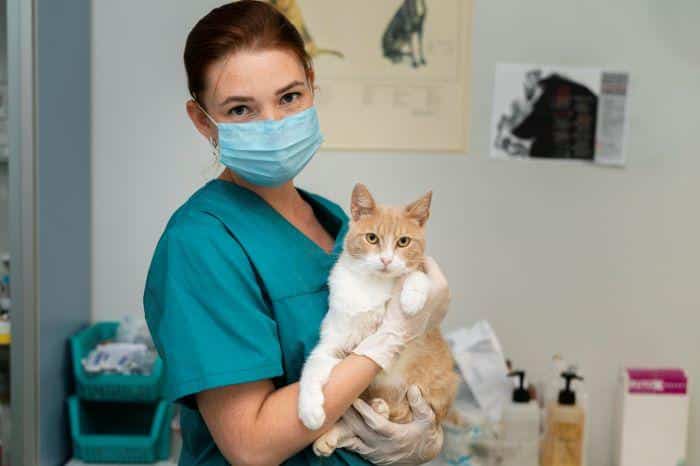
Routine Veterinary Care
Just like us, our animal buddies need their own version of a spa day, except with fewer candles and more stethoscopes. Regular vet visits are a cornerstone of pet care – they’re like the guardians of our pets’ health universe.
Importance of Regular Check-Ups
When it comes to your pet’s health, think of your vet as a caped crusader with a stethoscope.
They have this superpower of spotting health gremlins before they turn into full-blown supervillains.
It’s like having a health superhero in your pet’s corner, ready to swoop in at the first sign of trouble.
But it’s not all about fighting health baddies. Your vet is also a health tailor, stitching together advice and tips that fit your pet like a glove.
Whether your furry buddy is a sprightly puppy, a dignified senior cat, or a laid-back lizard, they get a health plan that’s as unique as they are. Because let’s face it, a one-size-fits-all approach in pet care is about as useful as a cat in a dog obedience class.
And let’s remember those regular check-ups. They’re like report cards for your pet’s health.
Your vet keeps tabs on everything from their weight to their pearly whites, ensuring they’re in peak condition. It’s like having a personal trainer and dentist rolled into one, but for your pet.
Vaccinations and Preventative Treatments
Vaccinations are essential armor in your pet’s health arsenal, guarding against diseases with a schedule tailored to each pet. Preventative treatments are your go-to for fending off fleas, ticks, and worms.
And let’s not forget dental care – regular cleanings and check-ups are crucial to prevent gum disease and keep those pearly whites healthy.
How to Choose the Right Veterinarian
- Credentials and Experience: Look for qualifications and experience, especially if you have an exotic pet.
- Clinic Atmosphere: A calm, clean, and friendly environment ensures a stress-free visit for your pet.
- Communication Style: Find a vet who speaks your language – not literally, but one who explains things clearly and listens to your concerns.
- Emergency Services: Know what services are available in case of an emergency. It’s like having a superhero on speed dial.
- Recommendations and Reviews: Word of mouth and online reviews can be gold when finding the perfect vet.
Routine veterinary care is the unsung hero in your pet’s life. It keeps them strutting, fluttering, or swimming happily, ensuring they remain healthy, happy, and ready for their next adventure (or nap – lots of naps).
Here is a helpful video about the conventional wrong habits we do for our pets.
Dos and Don’ts in Pet Care
Becoming a pet parent comes with a manual written in tail wags and purrs. To decode it, let’s delve deeper into the dos and don’ts of pet care. This isn’t just about avoiding no-nos; it’s about embracing all the yes-yeses that make pet parenting a joyous and fulfilling adventure.
| Do’s in Pet Care | Don’ts in Pet Care |
| Consistent Routine: Maintain regular feeding, exercise, and sleep schedules to create a sense of security. | Overfeeding: Avoid spoiling pets with extra treats; stick to recommended food portions. |
| Proper Grooming: Regular brushing for dogs, and managing fur matting in cats. Address grooming needs specific to birds, reptiles, and small mammals. | Neglecting Dental Health: Regular brushing and dental check-ups are crucial; don’t overlook dental care. |
| Gentle Handling: Understand and respect your pet’s preferred way of interaction to foster trust and prevent stress. | Skipping Vet Visits: Regular wellness checks are important, not just visits when your pet is sick. |
| Emergency Preparedness: Have a pet-specific first aid kit, know your vet’s emergency protocol, maintain pet insurance, and ensure your pet has proper identification. | Ignoring Behavior Changes: Pay attention to sudden behavioral changes; they could indicate health or emotional issues. |
| Emergency Plan: Have a plan for your pets in case of natural disasters or emergencies, including a pet emergency kit and knowing pet-friendly evacuation locations. | Using Human Products: Avoid giving human medications, shampoos, and foods to pets; use products specifically designed for them. |

Pet Breeding and Reproductive Health Across the Animal Kingdom
Step into the enchanting world of animal matchmaking, where the pitter-patter of little paws, claws, fins, and feathers marks the beginning of a delightful journey! Breeding pets – be they fluffy, scaly, or feathered – is a venture filled with love, responsibility, and lots of tiny miracles.
Thoughtful Considerations in the Breeding Saga
Knowledge is Essential: Breeding is like taking a cute, complex course in genetics, behavior, and care.
Whether it’s understanding the playfulness of puppies, the grace of kittens, the chirps of baby birds, the wriggling of tiny fish, or the slow and steady hatchlings of reptiles, each species brings its unique set of joys and challenges.
Health Checks: Picture this as a health-focused couples retreat. Ensuring that the mom and dad of any species are in peak condition is crucial.
After all, healthy parents are more likely to produce healthy offspring, whether they’re nursing puppies, guarding a clutch of eggs, or tending to a nest.
Ethical Breeding: It’s not just about adding more cute critters to the world. Responsible breeding involves improving the genetic line and ensuring the well-being of every creature involved, from the tiniest hamster to the most majestic horse.
It’s about balancing the joy of new life with the responsibility of ensuring every offspring has a loving home. This rings true whether you’re finding homes for playful kittens, chirpy bird fledglings, or curious little reptiles.
Treating parent pets like kings and queens isn’t just pampering; it’s ensuring they’re physically and emotionally ready for the demands of parenthood. This care spans the animal kingdom, acknowledging the needs of each species.
Healthcare for the Maternity Stars and Their Little Celebrities
- Regular vet visits for pregnant pets are like rolling out the red carpet for prenatal care. Each species has its unique needs, from nutrient-rich diets for expectant dogs and cats to the right temperature for a reptile’s incubating eggs.
- Once the babies arrive, they become the stars of the show. They need warmth, nutrition, and a whole lot of love. From feeding fledgling birds to monitoring a litter of kittens or a brood of baby rabbits, every moment is precious.
- These are crucial to ensure that both mother and offspring are thriving. Whether it’s a litter of puppies, a tank of fish fry, or a nest of hatchling turtles, these check-ups set the stage for healthy growth and happy futures.
Breeding pets, regardless of the species, is a journey filled with wonder, care, and the magic of new life. It’s a heartwarming adventure, whether you’re a seasoned breeder or embarking on this path for the first time.
Remember, each tiny creature’s well-being is in your hands, making you a crucial part of their story.
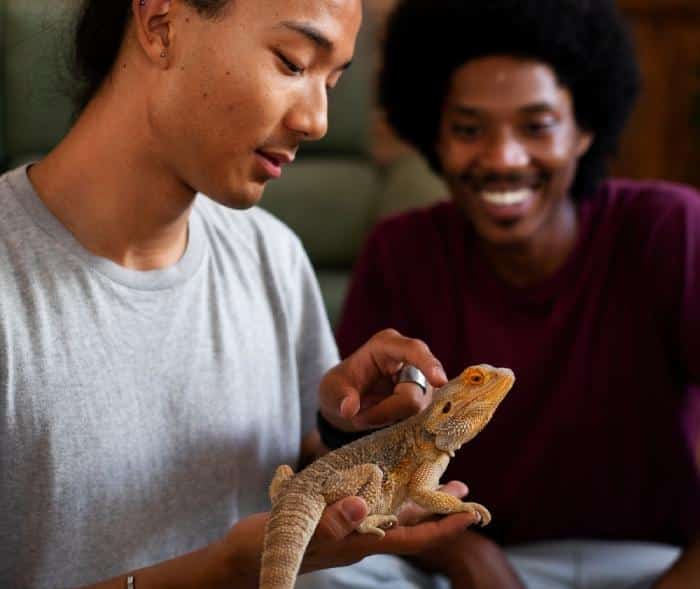
An End, But Not Really
Wrapping up this fur-tastic voyage through the land of pet care, remember that while our furry, feathered, or scaly friends might not speak our language, they sure know how to fill our lives with joy, laughter, and the occasional surprise hairball.
It’s a pawsome responsibility, but hey, who else can claim they have a professional couch cuddler or a tiny, scale-covered dinosaur at home? So let’s keep our spirits high, our humor ready, and our pet care game strong.
After all, a happy pet means a happy home, and who doesn’t love coming home to a wagging tail or a purring welcome committee?
Here’s to the endless adventures and comical moments in our journey of pet parenthood – may the treats be plentiful and the belly rubs never-ending!
References:
https://www.msdvetmanual.com/resourcespages/pet-health-overview


